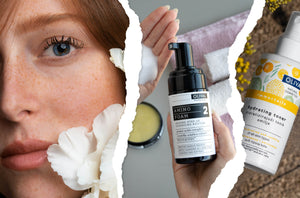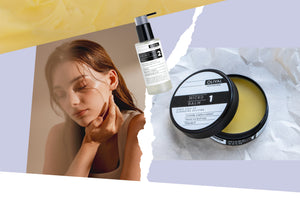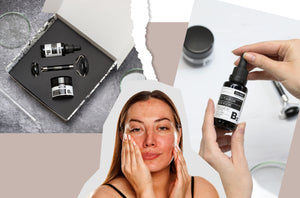After discovering all the benefits of using serums in daily facial care, few people decide to go back to life without them. Deep nourishment that gives the skin a silky glow, and even more so a healthy complexion, is something everyone wants.
However, to achieve such an effect, it is important to know how to use the products correctly. So, here's everything you need to know about applying a face serum.
The serum should be dabbed directly on the face
Should the serum be first applied to the palms and only then to the face or should it be applied directly to the face, is the question that is most often asked after choosing the right serum . The answer is that there is no wrong answer, that is, there is no correct or correct way to apply the serum .
When it comes to serums with a pipette, it is recommended that the skin of the face or hands does not touch the pipette . In this way, the microbiological purity of the serum itself, and thus its effect, can be successfully maintained. Namely, if the product is applied to your hands or if the pipette touches your skin, regardless of the fact that it has been cleaned and washed just before, there is a possibility of contamination of the product .
On the other hand, there is a difference in the second step of applying the serum: should it be rubbed, dabbed, or spread on the skin. Although the method of application depends from serum to serum, that is, on the consistency of the serum, it also depends on the type of skin, as well as on the "sensitivity" of the active substances in the serum.
However, it is most often recommended to apply the serum by dabbing . In this way, better absorption of the serum is encouraged, and the product does not heat up, as is the case with smearing and rubbing.
The rule "less is more" applies to serums.
When it comes to serums, the rule that less is more applies to them. The effect will not increase if you use half the bottle in one use. Namely, in 99% of cases, serums are the products with the highest concentration of active substances when it comes to the entire cosmetic range.
Serums with hyaluronic acid in an "excessive" amount, however, will not cause any consequences. However, serums that contain, for example, AHA or BHA acids can really harm you. It can cause severe irritation, peeling of the skin, as well as damage to the health of the hydrolipidic barrier. Of course, the concentration of active substances should also be taken into account, as well as skin type, habituation, or resistance of the skin to acids, etc.
In addition, serums based on AHA/BHA acids, as well as those concentrated serums, as well as serum emulsions with acidic pH or alkaline pH, should never be applied to sensitive areas such as around the eyes . It is therefore best to familiarize yourself with the action of the present active substances and with the recommendations for use.

Serums should not be mixed with creams
To apply the serum on a wet face or not, is the question now. Serums containing hyaluronic acid should be applied to a damp face . Namely, it attracts and retains moisture on its molecules.
If the serum is not applied to wet skin, the opposite effect than the desired one may occur. This can lead to the "extraction" of moisture from the skin , as well as the appearance of a dehydrated skin.
Most of the existing Professional serums contain hyaluronic acid and are applied to damp skin, and before applying them , it is best to moisturize the face with thermal water or a product such as Hidro tonic , which brings additional hydration and soothing.
On the other hand, all those who like to add a few drops of serum to their moisturizing cream and apply it all together on their face should know that as a rule this is not recommended, but it is not necessary to do so. In the best case, the concentration of the active substance in the serum will be diluted, and in the worst case, there may be a combination of different substances (from the cream and from the serum) that are otherwise not desirable to combine. It is best to apply serums separately - before applying cream and/or oil and always on a cleansed face, and in the case of serums with hyaluronic acid, on damp skin.








